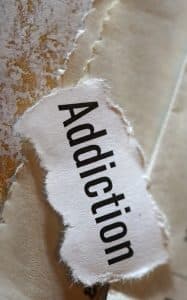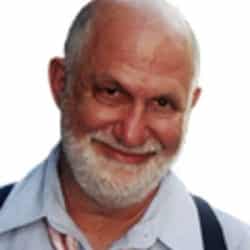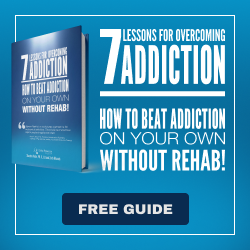How the Disease Theory Ruined Harm Reduction – Common myths about addiction
Our universal acceptance of the medical myth of addiction is deadly.
The following was live-blogged from my presentation at Galway, Ireland, including material from my forthcoming book with Zach Rhoads, Outgrowing Addiction: With Common Sense Instead of “Disease” Therapy.
Harm reduction treatments and strategies like long-term MAT and reducing painkiller prescriptions have been accepted across the board, from the AMA and the National Institute on Drug Abuse (NIDA) and other leading addiction-as-disease advocates to prominent harm reduction groups.
Yet these so-called harm reduction approaches have failed to stem the tide of drug deaths. Their failure is because they identify and address addiction as a brain disease to be treated medically. There is no sign that the failure of this perspective is causing or will cause any prevailing actors to change their thinking. They simply can’t.
In my recent presentations, I have begun by warning audiences that I will undercut all of their fundamental beliefs about addiction — but that if that prospect seemed alarming, they shouldn’t worry. They wouldn’t change their thinking no matter what evidence I presented, even if the consequences of their not doing so took the form of continuing spiraling drug death rates.
I began speaking in Galway before the Western (Ireland) Region Drug and Alcohol Task Force by establishing four criteria on which to decide the truths of addiction: common-sense logic, evidence, personal experience, and meaning. I then confronted eight myths about addiction imported largely from the U.S.
Myth I: Opioids Cause Addiction

“Isn’t that remarkable?” I asked. “Opioids are the sine qua non of addiction. Experts like Sam Quinones in his best seller Dreamland detail how the opioid molecule envelops the receptors in the brain and nervous system, trapping even the most resilient people in addiction. Yet not one person here who was exposed to this molecule became addicted. WHY didn’t you become addicted?”
I got less of a response – none – than I had hoped for. I prodded further: “Isn’t the question of who becomes addicted, and under what circumstances, the fundamental question we need to ask? Do you have no ideas about why none of you became addicted?”
One man finally said, “I stopped taking the painkiller when my pain went away.”
“You mean people quit using painkillers when they no longer feel pain?” I reacted, with mock incredulity.
That was all I got. Later, my host at the conference, Liam O’Loughlin, told me over dinner how he had badly hurt his hand, but stopped taking the powerful opioid and anti-inflammatory he had been given after just three days. “I didn’t like becoming groggy at two in the afternoon.” In other words, he had other matters to attend to with which narcosis interfered, and therefore he wasn’t inclined to savor the drugs’ effects.
Back to my interacting with the audience, I asked, “So why, then, do you believe opioids are special agents of addiction to which everyone must succumb? After all, not you nor anybody you know – if this audience is typical of your acquaintances – became addicted when they consumed an opioid.”
I offered the audience my one-word explanation for their resistance to opioid addiction – their “connectedness.” They had too many points of contact with life to allow them to sink under the drug’s effects; instead, they found ballast from the world around them to hold to their life course.
Myth II: People Can’t Quit Addictions On Their Own
I then asked the group to name the most difficult substance addiction to quit. They (correctly) shouted “tobacco” or “smoking.”
“Has anyone here quit smoking?”
From a third to 40 percent of the audience – 60 to 70 people – raised their hands.
“How many of you relied on a medical treatment – like Chantix or a nicotine gum or patch – to quit?”
Three or four people raised their hands – say five percent of quitters.
There was the usual grumbling that cigarettes are not “really” addictive, reversing decades of addictionology history, because they aren’t mind-altering. In fact, on the evidence provided by the massive NESARC study of recovery from substance dependence, smoking was the least likely and slowest to remit:
Lifetime cumulative probability estimates of dependence remission were 83.7% for nicotine, 90.6% for alcohol, 97.2% for cannabis, and 99.2% for cocaine. Half of the cases of nicotine, alcohol, cannabis and cocaine dependence remitted approximately 26, 14, 6 and 5 years after dependence onset, respectively.
“Given that smoking is the hardest substance addiction to quit, haven’t you just disproved in your own lives the two basic received opinions about addiction; first that opioids are irresistibly addictive, and in this instance that treatment is required to overcome addiction?”
Myth III: America is the Leading Edge in Thinking About and Dealing With Addiction
“The reason I ask these questions is that ideas you have about addiction, which come largely from America, control your thinking. Yet how well would you say that we in the U.S. are doing vis-a-vis addiction?”
I then presented the NIDA’s chart of drug deaths in America through 2017: As I summarized: ”Last year, deaths from every major class of drug peaked in the U.S.: that’s synthetic opioids, heroin, natural opioids, cocaine, and methamphetamine. In fact, they left out another major category of drug for which that was true: benzodiazepines.”
Myth IV: The Current Drug Epidemic in America is Caused By Pill-Pushing
“Why did this occur? Before answering that, please note that deaths began skyrocketing in 2012-13. Do you know what has happened to painkiller prescriptions since that time? They’ve plummeted.”
Three people then gave the same explanation for this unhalting rise in drug fatalities – the go-to-one in America – “drug companies are pushing pain pills and doctors are overprescribing them.”
I responded, skeptically, “Overprescription of opioids accounts for why the number of prescriptions has fallen dramatically, and yet drug deaths of all types have accelerated – really?”
Finally one woman answered that people were turning to street drugs when they failed to get prescribed painkillers.
I answered that this was a logical and true answer, since getting drugs on the street was always more deadly than taking drugs under medical supervision. But I added that this was not a sufficient explanation for drug deaths due to everything from stimulants to the whole array of depressant-analgesic drugs rising in lockstep.
Myth V: Public Health and Addiction Groups Are Driven By Bottom-Line Success in Attacking Addiction

So what of policy-makers? I quoted the head of the AMA’s task force on opioids, Dr. Patrice Harris.
Reckoning that between 2013 and 2017, there was a 22% decrease in opioid prescriptions nationwide, Dr. Harris noted that, “While this progress report shows physician leadership and action to help reverse the epidemic [by limiting prescriptions], more than 115 people in the United States die daily from an opioid-related cause.”
In other words, doctors were doing wonderfully, although opioid and other drug deaths continued to surge. The clear path forward based on Dr. Harris’s remarks was for physicians to redouble their efforts to curtail painkiller prescriptions.
How could I fault my audience for their unwillingness to accept logic, evidence, experience, and lack of efficacy as spurs to reconceive addiction and how we respond to it when the leading medical body in America refuses to do so?
Myth VI: All People Are Equally Susceptible to Drug Addiction
I then turned to a popular myth brought over to Ireland in a reverse migration: that addiction is “an equal opportunity destroyer.” This is the fantasy that the socioeconomically well off become addicted to opioids as readily as the poor and disenfranchised do.
I cited a comprehensive study by West Virginia’s health commissioner, Dr. Rahul Gupta, who examined every drug fatality in his state, one that leads the country in opioid deaths by a wide margin. Gupta found a shockingly prevalent template for such deaths: “If you’re a male between the ages of 35 to 54, with less than a high school education, you’re single and you’ve worked in a blue-collar industry, you pretty much are at a very, very high risk of overdosing.”
I asked the group what it meant that those dying were nearly always older rather than younger: “Are these fatalities due to drug overdose, which would be more likely for young and naive users? This profile instead tells us that those who are dying are isolated people on the underside of society who are suffering long declines in spiritual and physical health.”
In fact, other data sources have highlighted this deep association between drug deaths and social class and education, to wit: “deaths have grown increasingly more concentrated among those with lower levels of education, particularly among non-Hispanic whites.”
“Why,” I then asked, “do we insist on ignoring this profile? Because doing so allows us to believe the first myth, that drugs themselves cause addiction, which has the side advantage of removing for society any need to examine and to improve the conditions of the lives of people most susceptible to addiction and death. And, frankly, we don’t seem to care that much if these people die. We worry only about our own.”
The easy solution we seek instead of facing reality is to label addiction a medical problem. The one thing I and two distinguished speakers also presenting to the group – Dr. Shane Butler, sociology professor emeritus at Trinity University and Pauline McKeown, CEO of Coolmine TC in Dublin – were unified around was that any treatment for addiction must embody a holistic approach that attends to the human essentials of health, housing, purpose (as through education and work), and community. And it is these things that my online Life Process Program for addiction addresses.
By not doing so, and instead focusing on some imagined brain mechanism to account for addiction, one that neuroscience not only has failed to find but that research indicates cannot possibly exist, we have lost any chance of helping the most susceptible populations.
Myth VII: MAT is the Solution to Drug-Related Mortality
Which returns us to the subservience of even supposedly radical drug policy reformers who buy the medical model hook, line, and sinker – most notably in proposing MAT, medicine assisted treatment, as a remedy for addiction. MAT replaces street opioids for illicit drug users with prescribed Suboxone, buprenorphine, or methadone.
And while it is true that people maintained medically on narcotics are less likely to die, this substitution in no way addresses their addictions, leaving them perpetually vulnerable to relapse and drug crises when they depart from their medical drug regimens.
In fact, drug reformers and mainstream agencies now argue that MAT would end our drug crisis were it not, they claim, for the unfortunate difficulty of administering MAT in rural settings. Nonetheless, according to a study of ten leading opioids, “prescription opioid use peaked in 2011 and has declined rapidly since then. . . But buprenorphine bucked the trend by being the only opioid that showed an increase.”
And it is the largest American cities — which are most thoroughly served with MAT options – that are experiencing the greatest rise in opioid deaths (in this case due to heroin and fentanyl, et al.), thus balancing the findings of Gupta and others that the opioid epidemic is concentrated in poor white regions of the U.S. With both vulnerable populations, black and white, dismal failure is the constant companion of our “best” efforts in the addiction field.
Myth VIII: A Medical Approach to Addiction is Effective Because it Removes Human Agency As a Factor
I ended my talk by noting, “Underlying a recovery model based on health, home, purpose and community – a model created through the Substance Abuse and Mental Health Services Administration’s (SAMHSA’s) surveying mental health and addiction researchers — is the crucial, essential role of personal agency: ‘Recovery is person-driven. Self-determination and self-direction are the foundations for recovery as individuals define their own life goals and design their unique path(s) towards those goals.’”

Contra the NIDA, addiction is a disorder of the lives and lived experience of human beings, the remedy for which is that people must develop a sense of personal agency within a supportive setting and community. Unless and until we recognize and approach addiction in this light, we will never reverse its lethal hold on America and its most vulnerable citizens.
In the December 4 issue of NYRB, Harvard Medical School faculty and former editor-in-chief of NEJM, Marcia Angell, addressed America, “Opioid Nation.” Angell reviewed four books, Pain Killer, Dope Sick, American Overdose, and American Fix. She found all of them inadequate to the task of explaining America’s 2017 72,000 plus drug deaths – the first three because their “pill pusher” account (Myth IV) fails, and the fourth because it relies on the author’s addictive “disease” as an explanation. (Let it be noted that Angell is a critic of the pharmaceutical industry.)
Angell is especially concerned to refute the idea that drug availability, rather than the demand for drugs among disillusioned whites, is the cause of our epidemic (Myth VI). Instead, she believes “As long as this country tolerates the chasm between the rich and the poor, and fails even to pretend to provide for the most basic needs of our citizens, such as health care, education, and child care, some people will want to use drugs to escape.”
This is a critical insight that America misses – “to end the epidemic of deaths of despair, we need to target the sources of the despair.” But Angell too embodies many of the myths of addiction. She considers drug, including opioid, use itself – as universal as it is – to be the result of despair (Myth I). This is no truer than saying drinking alcohol, shopping, playing video games or using mobile phones, sex, or love are signs of despair.
Addiction, not its various manifestations in activities that may or may not be used addictively, is a sign of despair.








